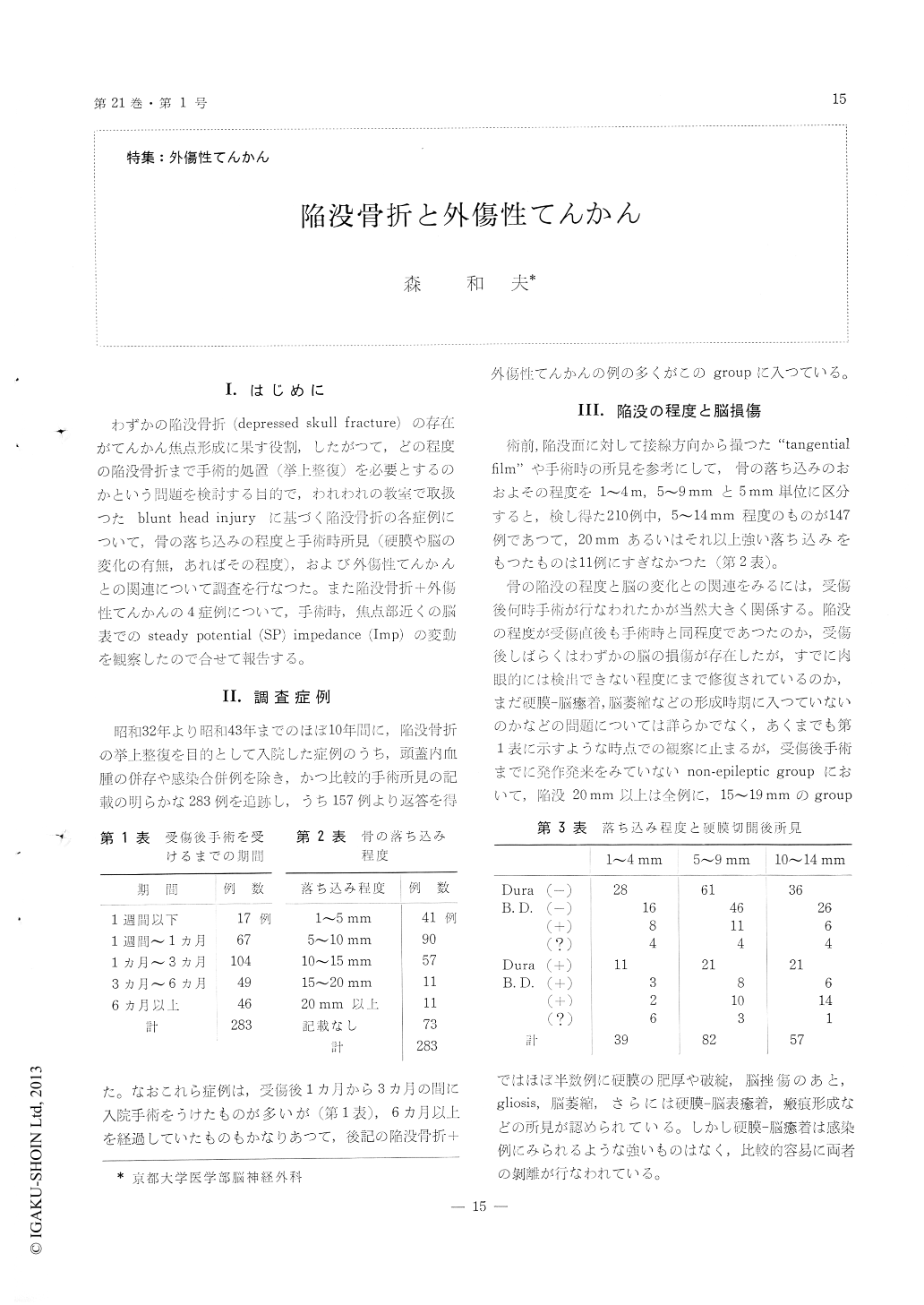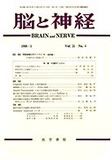Japanese
English
- 有料閲覧
- Abstract 文献概要
- 1ページ目 Look Inside
I.はじめに
わずかの陥没骨折(depressed skull fracture)の存在がてんかん焦点形成に果す役割,したがって,どの程度の陥没骨折まで手術的処置(挙上整復)を必要とするのかという問題を検討する目的で,われわれの教室で取扱つたblunt head injuryに基づく陥没骨折の各症例について,骨の落ち込みの程度と手術時所見(硬膜や脳の変化の有無,あればその程度),および外傷性てんかんとの関連について調査を行なつた。また陥没骨折+外傷性てんかんの4症例について,手術時,焦点部近くの脳表でのsteady potential (SP) impedance (Imp)の変動を観察したので合せて報告する。
Traumatic epilepsy occurs as the result of traumatic injury to the brain and the absence of a 1 to 1 cor-respondence between brain damages and bone de-pression is expected. However, in an attempt to draw a clear cut line between the presence and absence of the need for surgical reposition in de-pressed fracture, the present survey was conducted.
In the present study, the relationship between operative findings, degree of depression and epilepsy were studied in 283 cases of depressed skull fracture admitted in our hospital during an approximately 10 year period from 1957 to 1968. Excluded were those with intracerebral hematoma or infection. No direct correlation was demonstrated between the degree of depression and the degree of brain injury examined at surgery. According to the operative findings in many cases of depressed fractures with posttraumatic epilepsy, the depression of bone represented only an additional finding, the brain contusion at the time of trauma playing an important role in the formation of an irritative focus. In these cases, however, it was difficult deciding whether a relationship didn't exist between the presence of a depressed fracture and formation of the focus or if even a mild depres-sion exerted a facilitating action on formation of the focus. Consequently, the author arrived at the com-mon conclusion of recommending operative reposi-tion as early as possible even in mild depressed fractures especially in children or in cases with a disturbance of consciousness or in cases with focal sign, since, the operation is not accompanied by a risk to life.
In 4 cases with depressed skull fracture, simul-taneous recording of Steady Potential (SP) and of Impedance (Imp) and of Electrocorticograms (ECoG) were made at or nearby the focus produced. Spo-radic spike in ECoG associated with negative SP shift with respect to the indifferent electrode placed on the skull. Conversely, SP went on to positive at an area distant from the focus.
By observing a direction of SP associated with spo-radic spike, we could ascertain an active area to which operative procedure (cortical excision etc.) should be undertaken.
Abortive afterdischarge elicited by electrical stimu-lation to the cortical surface, did not show any re-markable SP shift, although Imp decreased for a while. On the contrary, during period of well matured afterdischarge, steep negative SP shift and increase of Imp were recognized. The negative SP shift was replaced by positive shift at the beginning of the postictal quiescence. In contrast, increasing impedance was still noticed after transition of elec-trical silence. Therefore, some divergences of these potential changes upon the phase of paroxysm were noted.
From our results, it was concluded that SP reflected the neuronal excitation process fairly faithfully, whereas impedance was more intimately related to the metabolic process secondary to the neuronal ex-citation.

Copyright © 1969, Igaku-Shoin Ltd. All rights reserved.


